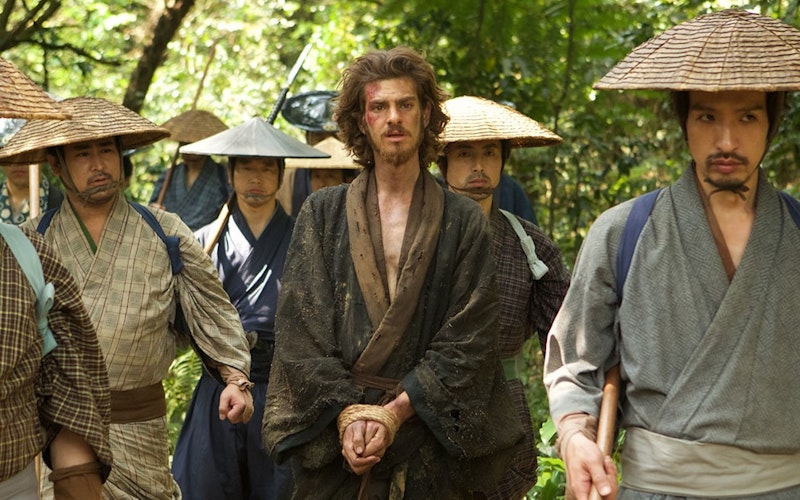
Movies
The Awful Affirmation of Martin Scorsese’s Silence
A major work of religious art is slowly making its way into North American movie theaters: Martin Scorsese’s Silence. An adaptation of the Shûsaku Endô novel about Jesuit missionaries suffering persecution in 17th-century Japan, Silence is a crisis-of-faith drama that evokes masterworks such as Ingmar Bergman’s The Seventh Seal and Robert Bresson’s Diary of a Country Priest. Like those films, Silence finds unlikely affirmation by confronting an awful reality: that even the most faithful can feel utterly forgotten.
Andrew Garfield plays Father Rodrigues, a young priest eager to spread the gospel in Japan, even though Christianity has been outlawed. His mission is cut short, however, when he is captured and imprisoned. Even then, the glory of martyrdom evades him, as his captors spare his life but threaten to torture and execute the Japanese Christians he had been leading unless he recants his faith by stepping on an engraved image of Jesus.
Images of Christ are the defining visual motif of Silence, as they were in Endô’s novel. He is represented on those stepping stones—known as fumie—and also in a portrait that Rodrigues envisions each time he prays. Featuring a pale Christ wearing a crown of thorns, the portrait is pointedly impassive. This is not a movie about God’s saving words or actions, but rather about his apparent distance.
And yet, Silence also offers affirmation. The film climaxes with a scene of Rodrigues being brought before a fumie as the cries of tortured Christians surround him. In this moment, Silence brings him (and us) to a place of utter helplessness, a place which—and here’s the awful part—feels absolutely bereft of faith as we traditionally understand it. At the same time, this is also the very place written about in Hebrews, where faith is described as “confidence in what we hope for and assurance about what we do not see.” Or, to reference the title of the movie, what we do not hear.
When we’ve been broken completely by a broken world, we might finally receive faith as a gift.
In his recent book Silence and Beauty, artist and author Makoto Fujimura considers Endô’s novel alongside his own journey as a Japanese-American Christian. (You can hear him talking about the project with Nicholas Wolterstorff and Neal Plantinga in the video below.) Fujimura served as a consultant on Scorsese’s film, and here is what he wrote about Silence and its adaptation: “Endô and Scorsese strip the characters of Silence of all they have desired and depict a worst-case scenario for them. The novel and the film expose the dehumanized, the corrupt, the cruel in the world.”
It is in this place, where we’ve been broken completely by a broken world, that we will finally be able to receive faith as Fujimura describes it: a gift. “Silence creates a possibility of a nondualistic world, one not framed by an oversimplified, black-and-white assessment of the nature of faith,” he writes. “Ultimately, faith is not forced on any of us; it is a gift of grace given to us by a gratuitous God.”
I would also add that faith is not something we can force upon ourselves—or measure by human standards meant to determine whether or not it is “true.” This is what Rodrigues discovers. In failing, in almost every way imaginable, to bring the gospel to 17th-century Japan, he is finally ready to receive faith as a gift, even in the face of silence.
Topics: